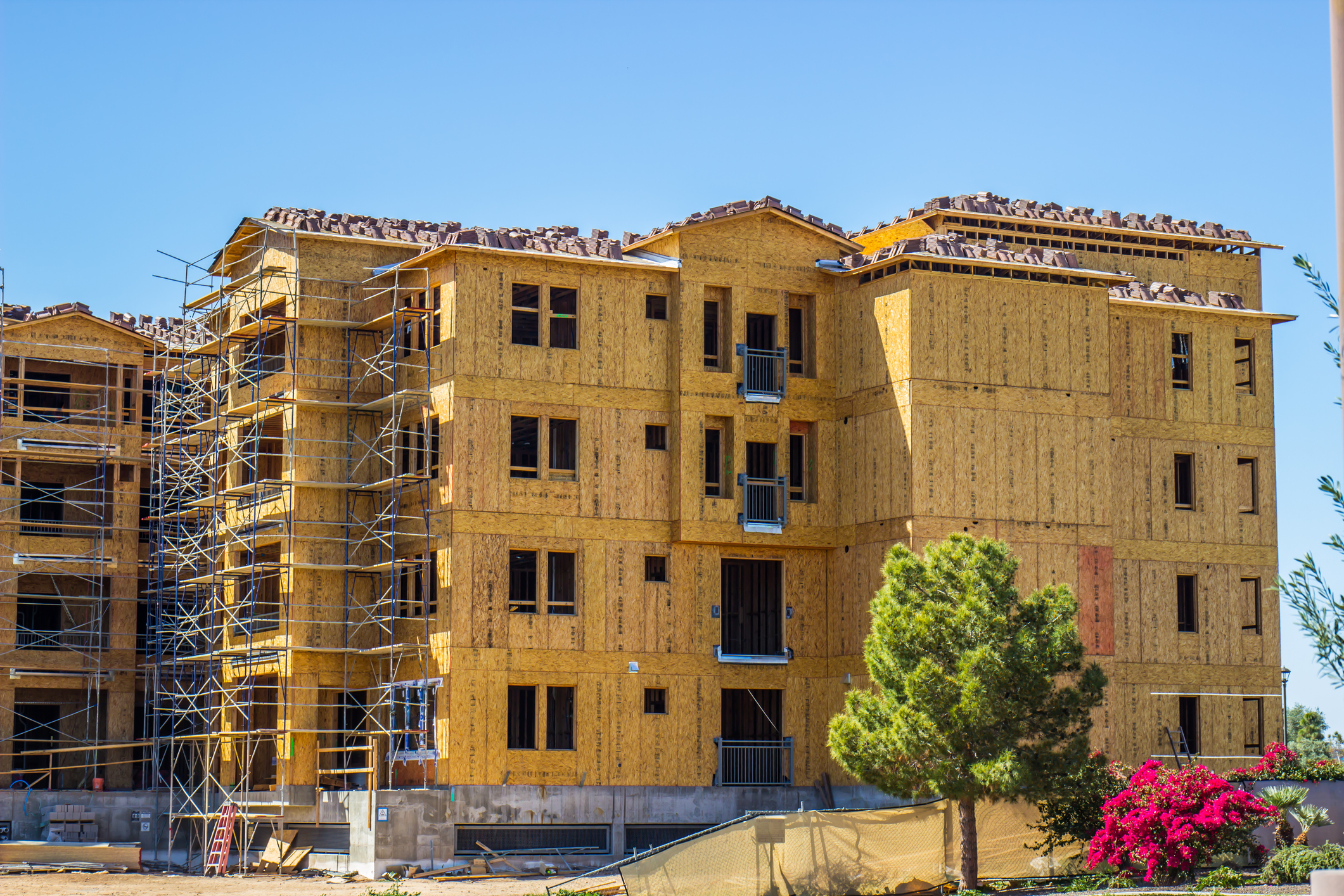Five Advantages of FHA Multifamily Construction Loans

In the last three years, multifamily construction has reached levels not seen since the 1980s, supported, in part, by the U.S. Department of Housing and Urban Development’s (HUD) Federal Housing Administration (FHA) loans. If you are exploring the acquisition, refinancing, rehabilitation, or new construction of conventional multifamily, affordable housing, seniors housing, or a healthcare facility, consider FHA multifamily construction loans, a stable financing option with excellent terms and many other attractive advantages.
What are FHA Multifamily Construction Loans?
FHA multifamily construction loans, a type of government-insured financing for residential properties with five or more units, can be used for ground-up developments as well as major renovations and rehabilitations. Well-suited for long-term investors, they offer attractive terms, including low down payments and lower fixed-interest rates than many other types of conventional loans.
The Advantages of FHA Construction Loans
FHA loans are known for their flexibility, and while they are commonly used for affordable housing projects, a variety of other projects, including assisted living and other multifamily projects, are also eligible. These loans have many benefits, including:
1) High leverage: investors can apply leverage from the project to remaining equity to increase profitability.
2) Long, fully amortizing terms of up to 40 years: HUD-insured loans typically have among the industry’s longest terms. Long amortization periods can result in lower monthly payments and lead to more cash flow for your investment.
3) Low fixed interest rates: HUD loans offer some of the industry’s lowest rates, and required payments will not go up or down during the loan term.
4) Non-recourse: HUD guarantees these loans, and borrowers are not personally liable.
5) Fully assumable, a key differentiator in a high interest rate environment: If an investor decides to sell a property, the buyer can inherit an outstanding mortgage and terms. This is an attractive option when the assumable mortgage rate is lower than the market rate.
Types of FHA Construction Loans for Investors to Consider
The FHA 221(d)(4) loans, which are designed to help finance new construction or substantial rehabilitation of multifamily projects, are available for a broad spectrum of developments, including market-rate, low-to-moderate income, subsidized multifamily, cooperative housing, and affordable housing properties with at least five units. FHA 221(d)(4) loans require a $4 million minimum, and the maximum amount of a profit motivated loan is 90 percent of the estimated replacement cost. Some investors may request a straight-to-firm application, saving significant time by eliminating the preliminary application stage.
The FHA 241(a) supplemental loan, a HUD-insured second mortgage, is an attractive multifamily construction loan option for investors who need to finance repairs, additions, or improvements to HUD first mortgage properties. FHA 241(a) is a fixed rate loan and insures lenders against loss on mortgage defaults. The program is intended to keep the project competitive, extend its economic life, and to finance the replacement of obsolete equipment.
Other FHA loans that can be used for new construction or substantial rehabilitation include FHA 220 and FHA 231.
Arbor’s FHA Multifamily Loans Offer Stability Amid Rising Rates
With construction costs and interest rates rising, Arbor’s FHA multifamily construction loans offer low fixed rates and help borrowers meet investment goals amid market volatility. As an approved FHA Multifamily Accelerated Processing (MAP) lender, Arbor provides access to flexible FHA multifamily construction loan programs on an expedited basis. Our seasoned FHA team has strong relationships with all HUD offices and the expertise to guide you through the entire loan process. Contact us to learn how our team can help with your next multifamily project.
Interested in the multifamily real estate investment market? Contact Arbor today to learn about our array of multifamily, single-family rental, and affordable housing financing options and view our other market research and multifamily posts in our research section.

